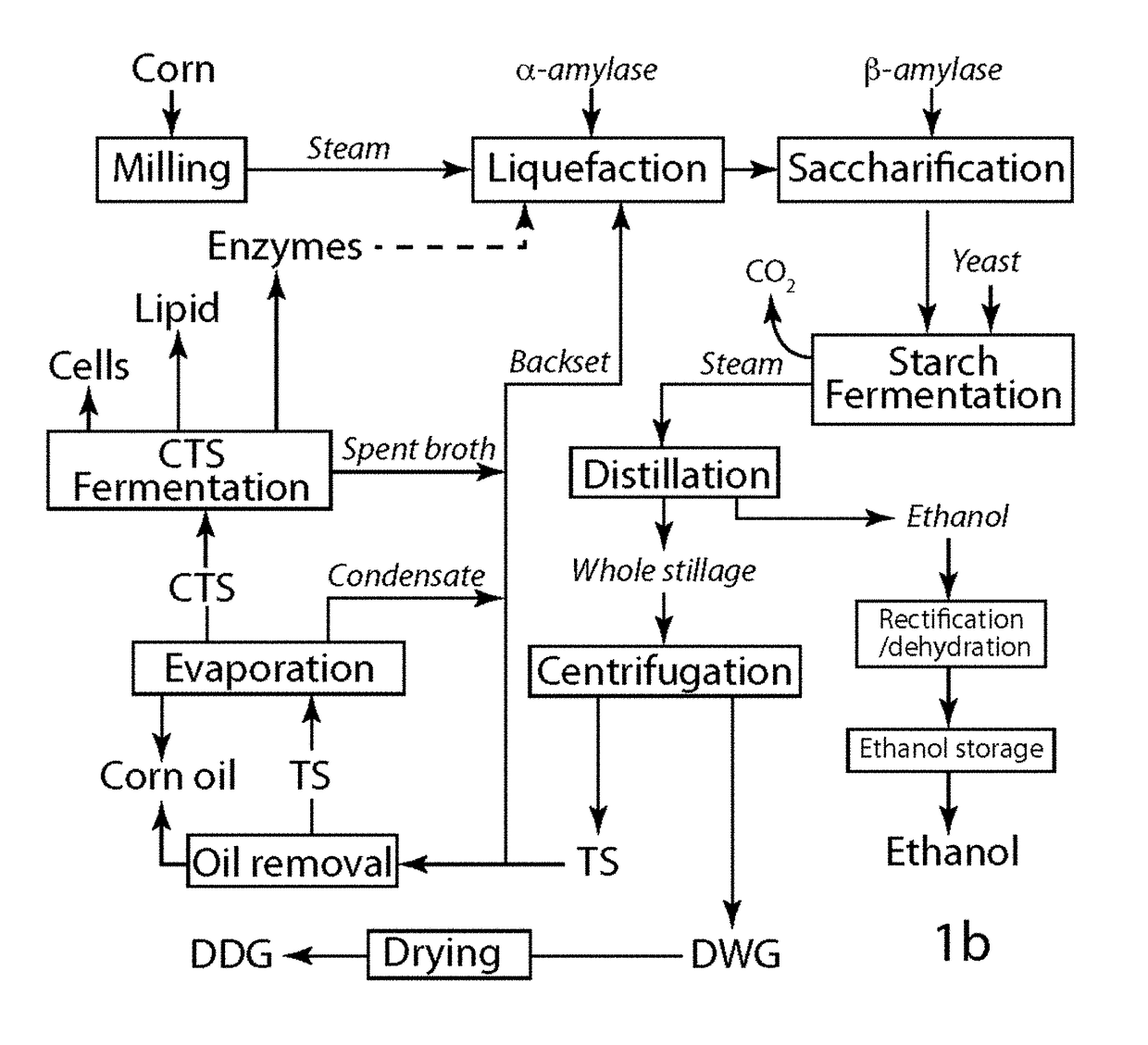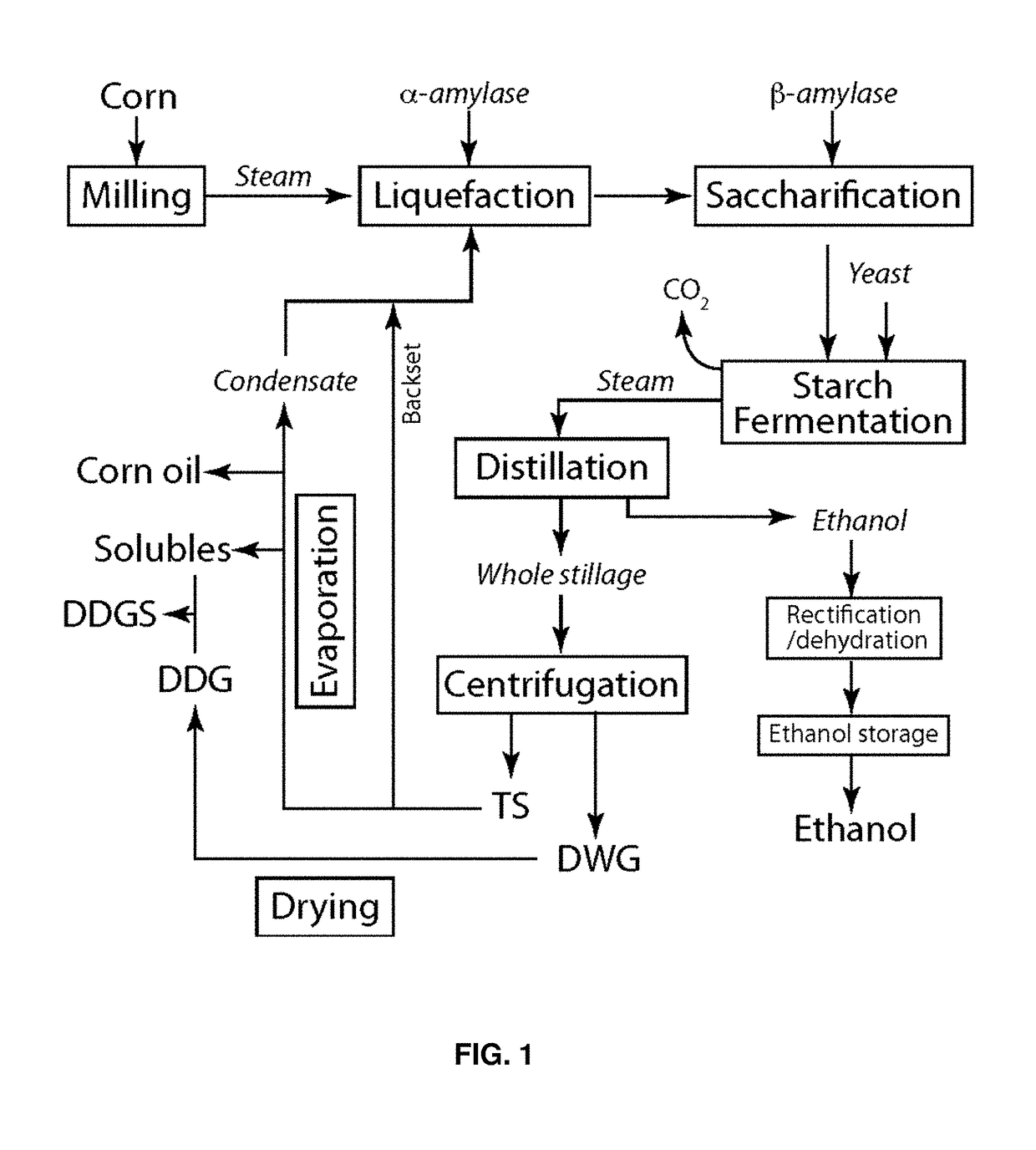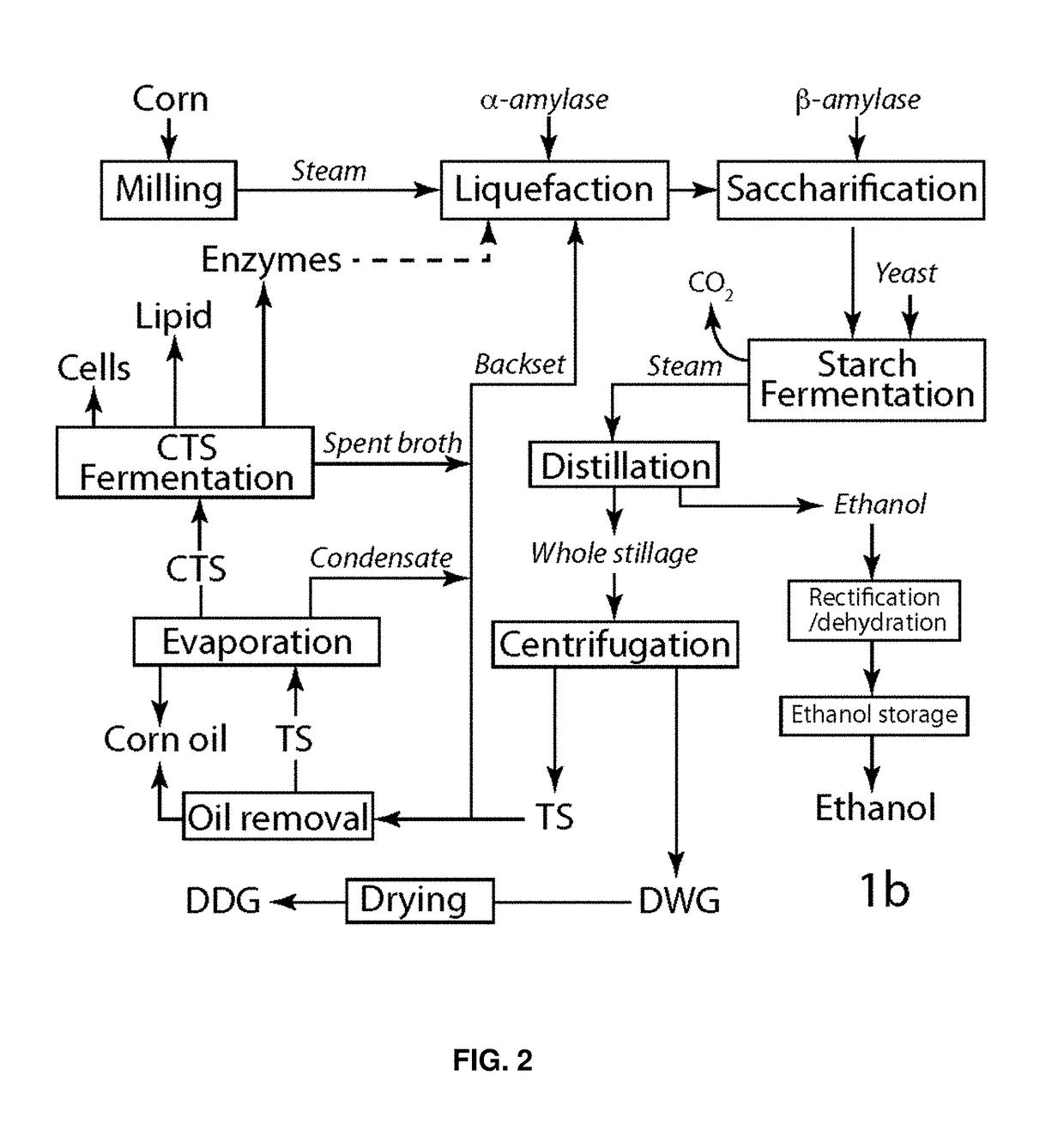Compositions and methods for producing lipids and other biomaterials from grain ethanol stillage and stillage derivatives
a technology of which is applied in the field of compositions and methods for producing lipids and other biomaterials from grain ethanol stillage and stillage derivatives, can solve the problems of underuse of biodiesel production capacity, inability to realistically approach, and higher prices of commodities derived, so as to increase the profit margin of grain ethanol producers, reduce the viscosity of thin stillage, and improve the effect of quality
- Summary
- Abstract
- Description
- Claims
- Application Information
AI Technical Summary
Benefits of technology
Problems solved by technology
Method used
Image
Examples
examples
Background and Overview
[0208]The existence of an annotated genome for Lipomyces starkeyi greatly facilitates cloning and homologous expression, but even with a complete or nearly-complete genome, various problems are encountered in cloning and expressing target genes.
[0209]One aspect of a suitable cloning strategy involves overexpressing endogenous genes involved in lipid production in L. starkeyi under constitutive promoters. Genomic DNA (gDNA) can be a preferable source for gene amplification, because all introns should be natively excised, and genomic DNA preparation is faster and cheaper than creating cDNA libraries. However, certain introns may have regulatory functions or their presence may impede or promote the post-transcriptional processing, subsequent protein translation, or stability of the transcript when overexpressed. Therefore, some gene targets are preferably cloned from cDNA and other targets are cloned from gDNA.
[0210]Another issue to consider in cloning involves p...
embodiment 1
[0368]A recombinant yeast comprising one or more recombinant nucleic acids configured to express one or more proteins selected from the group consisting of an acetyl-CoA carboxylase, an alpha-amylase, an ATP citrate lyase, a diacylglycerol acyltransferase, a fatty acid synthase, a glycerol kinase, a 6-phosphogluconate dehydrogenase, a glycerol-3-phosphate dehydrogenase, a malic enzyme, a fatty acyl-CoA reductase, a delta-9 acyl-CoA desaturase, a glycerol-3-phosphate acyltransferase, a lysophosphatidate acyltransferase, a glucose-6-phosphate dehydrogenase, a beta-glucosidase, a hexose transporter, a glycerol transporter, a glycoside hydrolase enzyme, and an auxiliary activity family 9 enzyme.
embodiment 2
[0369]The recombinant yeast of embodiment 1, wherein the one or more recombinant nucleic acids comprises one or more recombinant genes configured to express the one or more proteins.
PUM
| Property | Measurement | Unit |
|---|---|---|
| Fraction | aaaaa | aaaaa |
| Angle | aaaaa | aaaaa |
| Angle | aaaaa | aaaaa |
Abstract
Description
Claims
Application Information
 Login to View More
Login to View More - R&D
- Intellectual Property
- Life Sciences
- Materials
- Tech Scout
- Unparalleled Data Quality
- Higher Quality Content
- 60% Fewer Hallucinations
Browse by: Latest US Patents, China's latest patents, Technical Efficacy Thesaurus, Application Domain, Technology Topic, Popular Technical Reports.
© 2025 PatSnap. All rights reserved.Legal|Privacy policy|Modern Slavery Act Transparency Statement|Sitemap|About US| Contact US: help@patsnap.com



